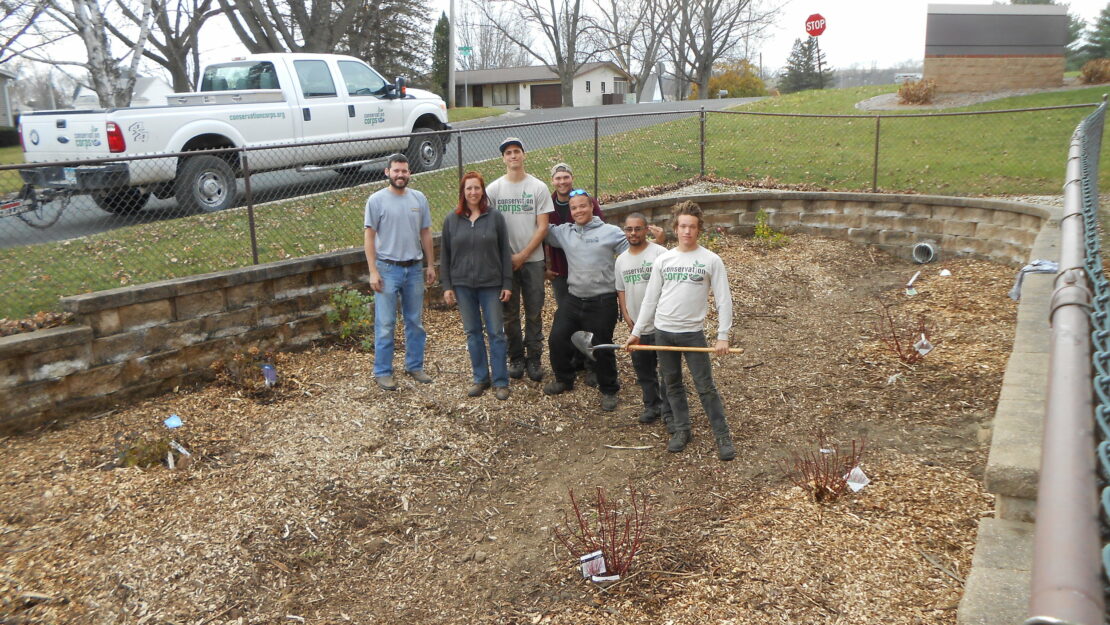Benefits of In-Town Project Flow to the River


Preston is a quaint town of 1,300, located in southeastern Minnesota, about a dozen miles from the Iowa border. The community does good tourism business, drawing those who enjoy shopping and dining as well as those who fish trout in the Root River and enjoy its photo-worthy bluffs. Preston calls itself “Minnesota’s Trout Capital,” and the Root’s south branch is a designated trout stream. Protecting the Root is an environmental responsibility, but a healthy river is also important to the town’s livelihood.
When the Minnesota Pollution Control Agency determined the south branch of the Root was “impaired for aquatic life use due to turpidity” (i.e., a troubling amount of gunk in the water), the Fillmore County Soil and Water Conservation District (SWCD) knew the culprits were two stormwater ponds, in front of the County Office Building, that drained to the river. It was a project made-to-order for The Conservation Corps, whose five-person Rochester Aspens crew produced a high-functioning, low-maintenance retention basin that solves a multitude of problems but, most important, improves drainage into the Root and assures a level of water quality that fortifies the river’s allure to anglers and others. The Conservation Corps provides hands-on environmental stewardship and service-learning opportunities to youth and young adults from diverse backgrounds while accomplishing conservation, natural resource management and emergency response work.
The existing stormwater ponds were little more than grass pits with angled sides that allowed water to run to existing drain pipes. There were labor costs for mowing and weed whipping. Poor access presented a safety issue. Drainage was inadequate, which allowed sediment to drain to the river and algae to grow in the ponds. Erosion had adversely affected neighboring yards.
The Conservation Corps crew began by removing the grass and followed with a tiller that loosened and aerated the soil underneath. Then came several layers of a mulch-sand-dirt mixture that would filter particulates out of the water as it flowed through. This meant water that got to the river was far cleaner than before. A mulch-only layer topped what was now a highly functioning retention basin, and low-maintenance native plantings completed the project.
Especially given the pond’s location in the heart of town, the SWCD saw an opportunity to educate County personnel and the public about stormwater treatment. The Conservation Corps installed signage that identifies the various components of the basin and describes how each contributes to the cleaner water now flowing to the river.
The Fillmore SWCD – and the community – are thrilled with the outcome.
“The Conservation Corps crew members worked hard, were enthusiastic about the project, and maintained their professionalism throughout,” said Jennifer Ronnenberg, water management coordinator at the Fillmore SWCD. “Everything looks great, and we have already received many comments of praise from the community. I couldn’t have asked for a better crew.”
The Conservation Corps crew felt the love, too.
“It was really gratifying to transform an ugly, broken system into something beautiful that helps the environment, helps the river and helps the town,” said crew leader Billy Ritzenthaler. “And it’s really cool to give kids an opportunity to do something they can be proud of.”